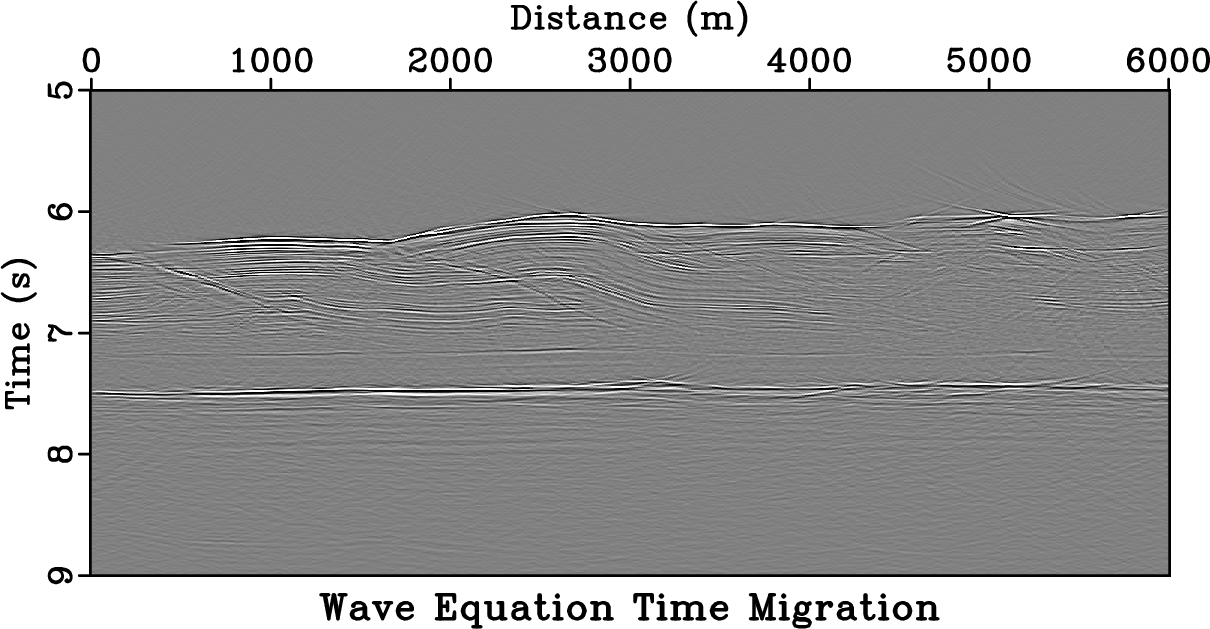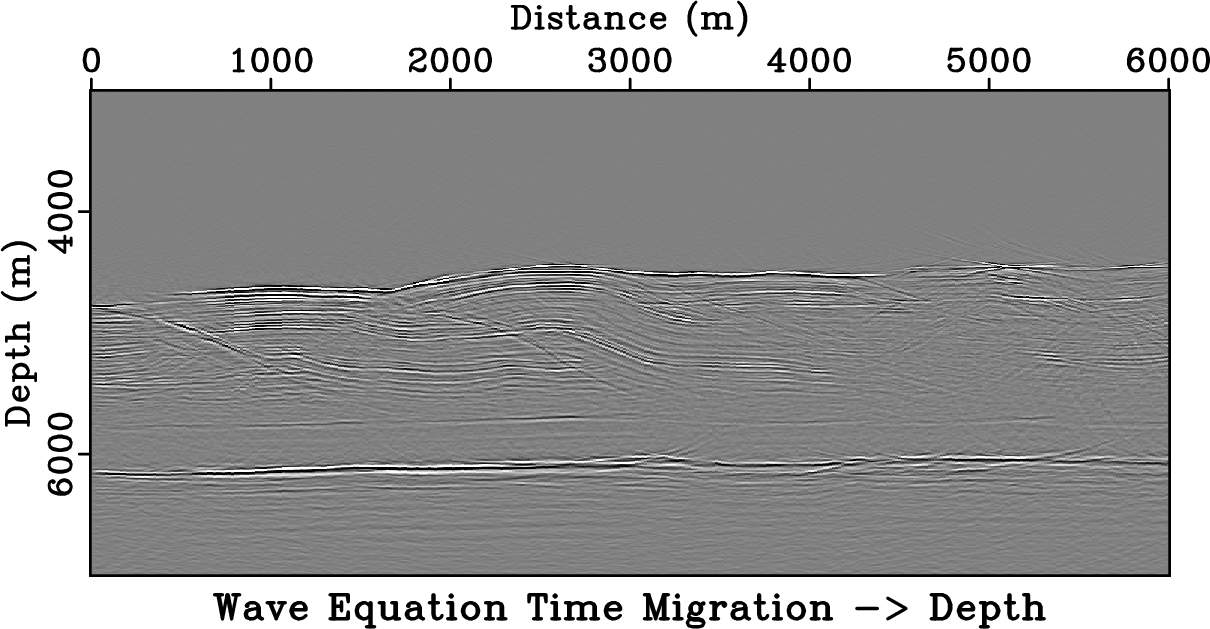A new paper is added to the collection of reproducible documents: A variational approach for picking optimal surfaces from semblance-like panels

We propose and demonstrate a variational method for determining optimal velocity fields from semblance-like volumes using continuation. The proposed approach finds a minimal-cost surface through a volume, which often corresponds to a velocity field within a semblance scan. This allows picked velocity fields to incorporate information from gathers that are spatially near the midpoint in question. The minimization process amounts to solving a nonlinear elliptic partial differential equation, which is accomplished by changing the elliptic problem to a parabolic one and solving it iteratively until it converges to a critical point which minimizes the cost functional. The continuation approach operates by using a variational framework to iteratively minimize the cost of a velocity surface through successively less-smoothed semblance scans. The method works because a global minimum for the velocity cost functional can only exist when the semblance scan varies smoothly in space and convexly in the parameter being scanned. Using a discretization of the functional with a limited-memory Broyden-Fletcher-Goldfarb-Shanno (L-BFGS) algorithm we illustrate how the continuation approach is able to avoid local minima that would typically capture the iterative solution of an optimal velocity field determined without continuation. Incorporating continuation enables us to find a lower cost final model which is used for seismic processing of a field data set from the Viking Graben. We then utilize a field data set from the Gulf of Mexico to show how the final velocity model determined by the method employing continuation is largely independent of the starting velocity model, producing something resembling a global minimum. Finally, we illustrate the versatility of the variational picking approach by demonstrating how it may be used for automatic interpretation of a seismic horizon from the Heidrun Field.

